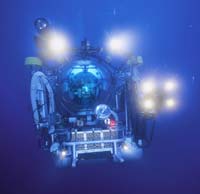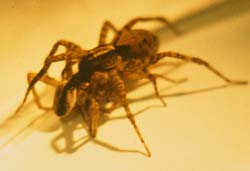Articles and reports from the Life Sciences and chemistry area deal with applied and basic research into modern biology, chemistry and human medicine.
Valuable information can be found on a range of life sciences fields including bacteriology, biochemistry, bionics, bioinformatics, biophysics, biotechnology, genetics, geobotany, human biology, marine biology, microbiology, molecular biology, cellular biology, zoology, bioinorganic chemistry, microchemistry and environmental chemistry.

Identification of ’Jelly Belly’ gene may lead to new drugs to combat heart disease, cancer and neurological disorders
Researchers at Oregon Health & Science University (OHSU) have identified a secreted signaling protein that regulates smooth muscle development in fruit flies. In the absence of a protein called “Jelly Belly (Jeb),” primitive smooth muscle cells fail to migrate or differentiate, according to study results published in the October 2 issue of Nature.
“Our r

A team of researchers at the Institute of Agricultural Biotechnology & Natural Resources, together with the Japanese pharmaceutical company, JCR Pharmaceuticals, have discovered an enzyme which could be fundamental in the metabolism of glycogen in mammals. This find may be the first step in the finding a cure for illnesses associated with metabolic disorders such as certain kinds of diabetes and cancer. The characterisation and identification of the gene that its codes has been recently published in

A UCLA study demonstrates for the first time that specific cells found in the adult artery wall have stem cell-like potential. Researchers found artery cells that change into cartilage, bone, muscle and marrow stromal cells.
The new study will be published online on Oct. 27 and will appear in an upcoming print issue of the journal Circulation. The study may lead to a new source of adult stem cells, which may increase potential treatment options and avoid the controversial use of fetal stem

In 1984, HARBOR BRANCH scientists exploring deep waters off the Bahamas in one of the institution’s Johnson-Sea-Link submersibles discovered a small piece of sponge that harbored a chemical with a remarkable ability to kill cancer cells in laboratory tests. Despite almost two decades of searching, though, the group was never able to find enough of the sponge to fully explore its potential. But now that process can finally begin because, thanks to some creative detective work, the team has found

Cassowaries’ low-frequency sounds may give insight into dinosaur communications
A family of huge forest birds living in the dense jungles of Papua New Guinea emit low-frequency calls deeper than virtually all other bird species, possibly to communicate through thick forest foliage, according to a study published by the New York-based Wildlife Conservation Society.
Published in the recent issue of the scientific journal The Auk, the study says that three species of cassowaries

Sometimes familiarity does not breed contempt: A Cornell University behavioral scientist has found that female wolf spiders prefer mates that are comfortably familiar.
However, the researcher has discovered, a male wolf spider unlucky enough to attempt to mate with an unfamiliar female probably is doomed to be killed and eaten by the female.
“Finding this behavior is really surprising. Social experience influences mate choice,” says Eileen Hebets, a Cornell postdoctoral researcher